Edge Alien Jigs - What are they and How do I use them?
From first time fishos to seasoned veterans, Edge Alien Jigs are an easy and cost effective way to put a feed of fish on the table. Alien Jigs are a great option for people of all ages and fishing experience to use, with the jig offering various different ways to fish. Common table fish species caught using Edge Alien Jigs include snapper, kahawai, trevally, john dory, blue cod, gurnard and kingfish. Edge Alien jigs come in a variety of weights and colours to cover a range of depths and give the angler the option to change head and skirt colour whilst fishing if the fish are being picky.
What is an Edge Alien Jig?
Essentially, these are a kabura or tai raba lure, it features a sliding 'head' and very small but sharp assist hooks bound to cord and attached to a solid ring. They also incorporate soft but durable silicone skirts and tassles which are used to entice the fish to bite. Kaburas have been used in Japan for many years, often with varying head shapes and assist combinations, but the theory remains the same - they are designed to mimic different wounded fish species. When looking at them underwater it's easy to envision these resembling a small injured squid, octopus, shrimp, crab, or baitfish—the very delicacies that our fish species here in NZ like to snack on.
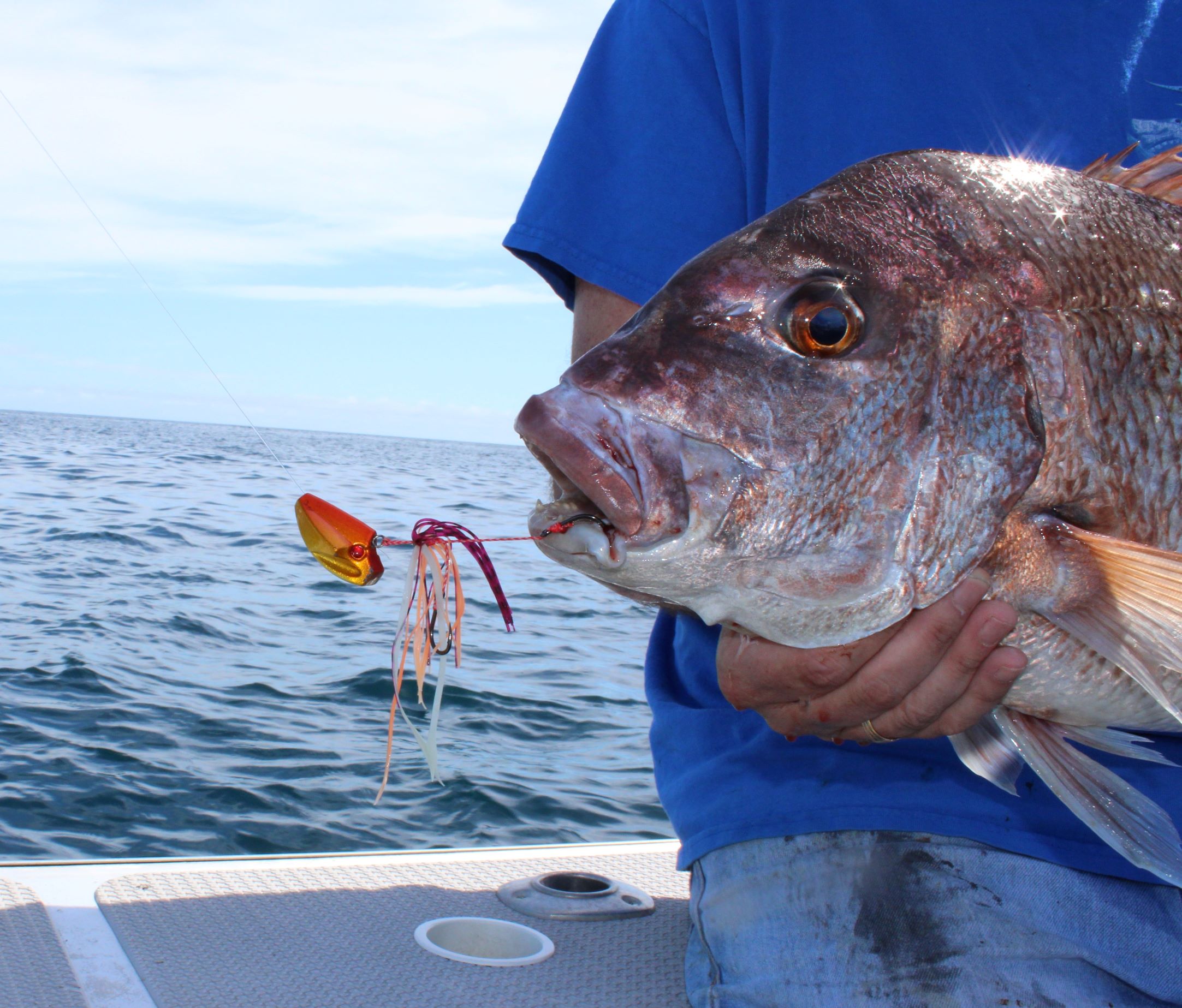

What gear and why?
Using a designated slow pitch rod and reel will give the most effective results when fishing Edge Alien Jigs. An overhead (or spin reel) on a soft actioned rod that gives a slow tip action is ideal for this situation. A great starting option would be the Shimano Sedona 4000 spinning reel with a Vortex slow jig rod or a Penn Squall II 12 overhead combo. We recommend overhead reels for slow jig fishing fish will often hit the jig on the drop and you can engage the reel quickly by simply winding the handle. Hot Tip: An overhead rod/reel combo gives the angler more control with bite detection while it is free spooling down the water column.
When spooling a reel for slow jigging, Edge multi colour braid is a fantastic pairing, with each change in colour signaling 10m. This allows the angler to pick out schools of fish on the sounder and drop the lure into the desired depth by counting the amount of colours coming off the reel. Braid size of 20/30lb would be ideal with about 2m of 25-30lb Edge fluorocarbon trace attached to the Alien Jig. Fluorocarbon is very important as it has a much higher abrasion resistance compared to mono and is invisible to fish. Connecting the braid to the fluorocarbon can be done with a variety of knots. Basic and easy to tie knots include the double-uni knot, albright knot and FG knot.
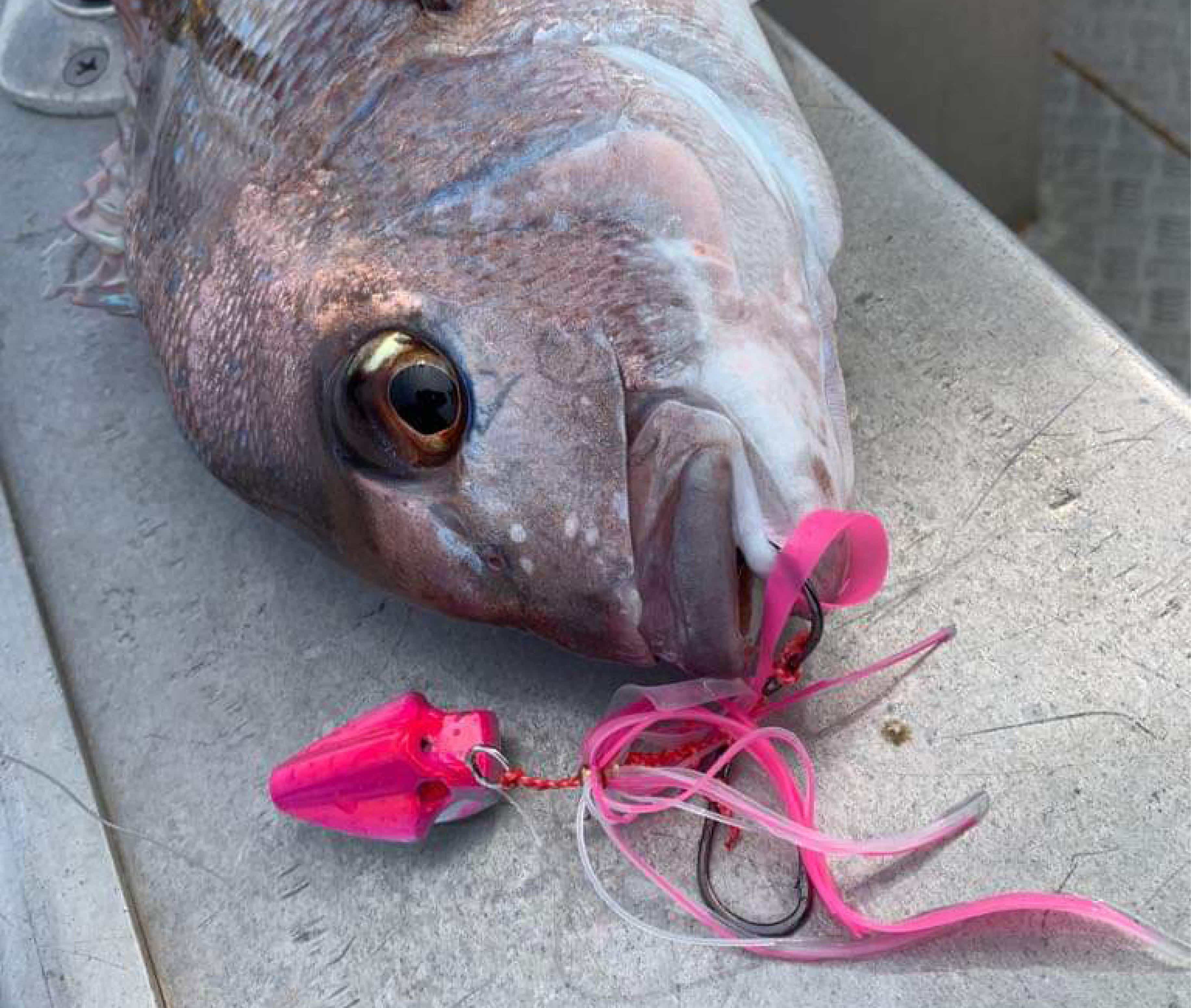

How to fish Alien Jigs?
The most effective way to fish Alien jigs is to either find a workup or find an area where schools of fish are holding using your fish finder. Once an area is found, just sit in the location for a couple of minutes to work out which way your boat will be drifting. This will help figure out where is the best position to start the drift in relation to the fish. Dropping a sea anchor will allow the drift speed to be slowed meaning more time on top of the fish strike zone.
Technique 1 - Slow Jigging:
One way to fish the Edge Alien Jig is by letting the jig free-fall through the water column. The uniquely designed head of the Alien Jig will put out small vibrations like a bait fish would, which will attract the predatory fish. Once on the bottom, begin a very slow wind back up. Once about a third to a half up the water column, drop the jig back to the bottom and repeat. A key tip is not to strike the fish once you feel tapping on the lure, the fish will hook themselves. Continue a slow wind up until the weight of the fish comes on and enjoy the fight. A very slow lift of the rod can also be done, as long as it is not a fierce striking motion.
Technique 2 - Bottom Bouncing:
A great feature about the Edge Alien Jig is you don’t need to be holding the rod to hook a fish! By dropping the jig to the bottom and placing the rod in an angled rod holder, the natural movement of the sea will give the jig skirt the action required. As the vessel moves, the jig skirt acts like a crab or baitfish moving along the sea floor. This method also works great in sandy harbours by imitating small crabs and octopus moving with the current. The method of bottom bouncing allows you to fish another rod actively, such as another slow jig or softbait.
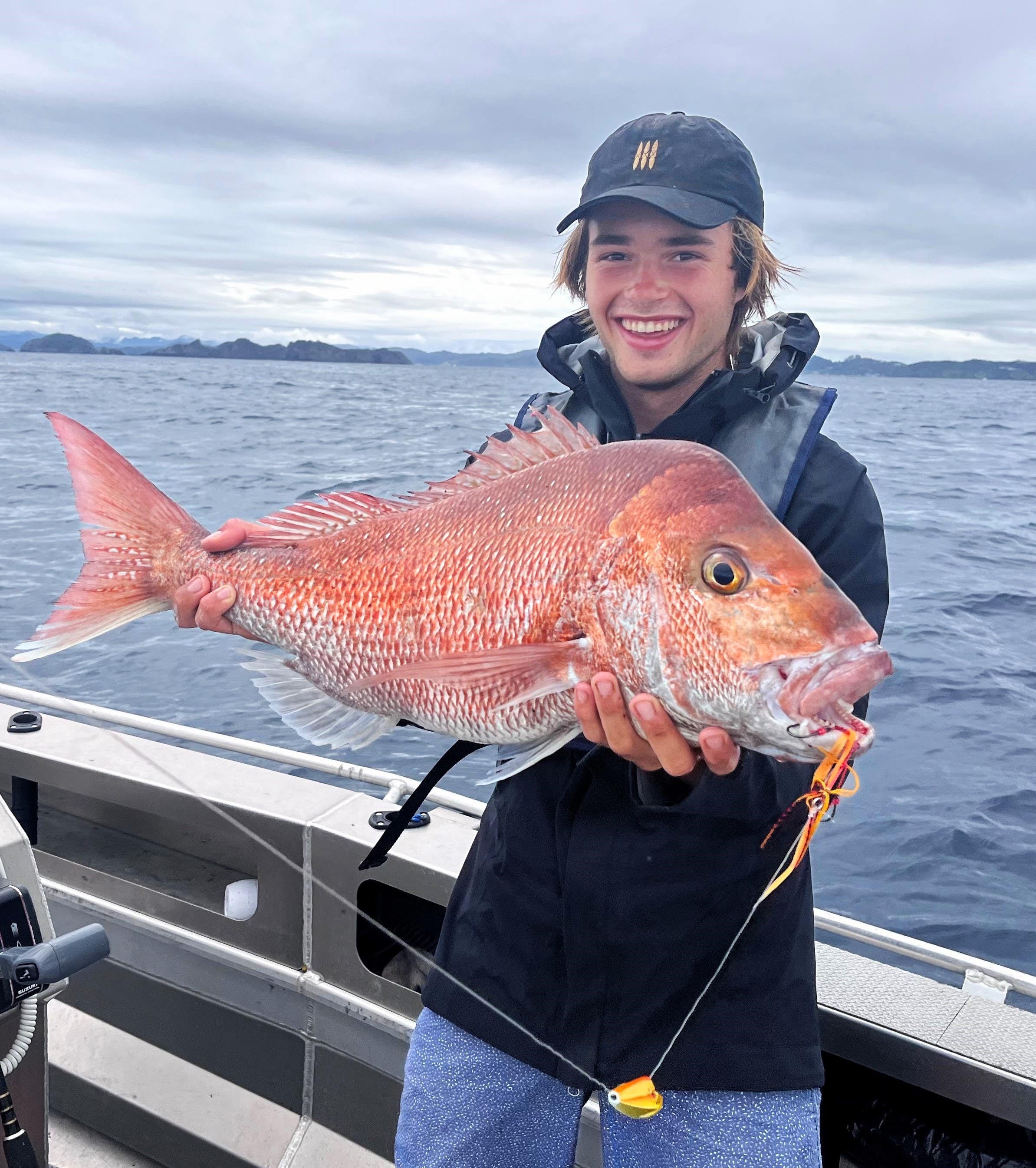

Rod & Reel Combos
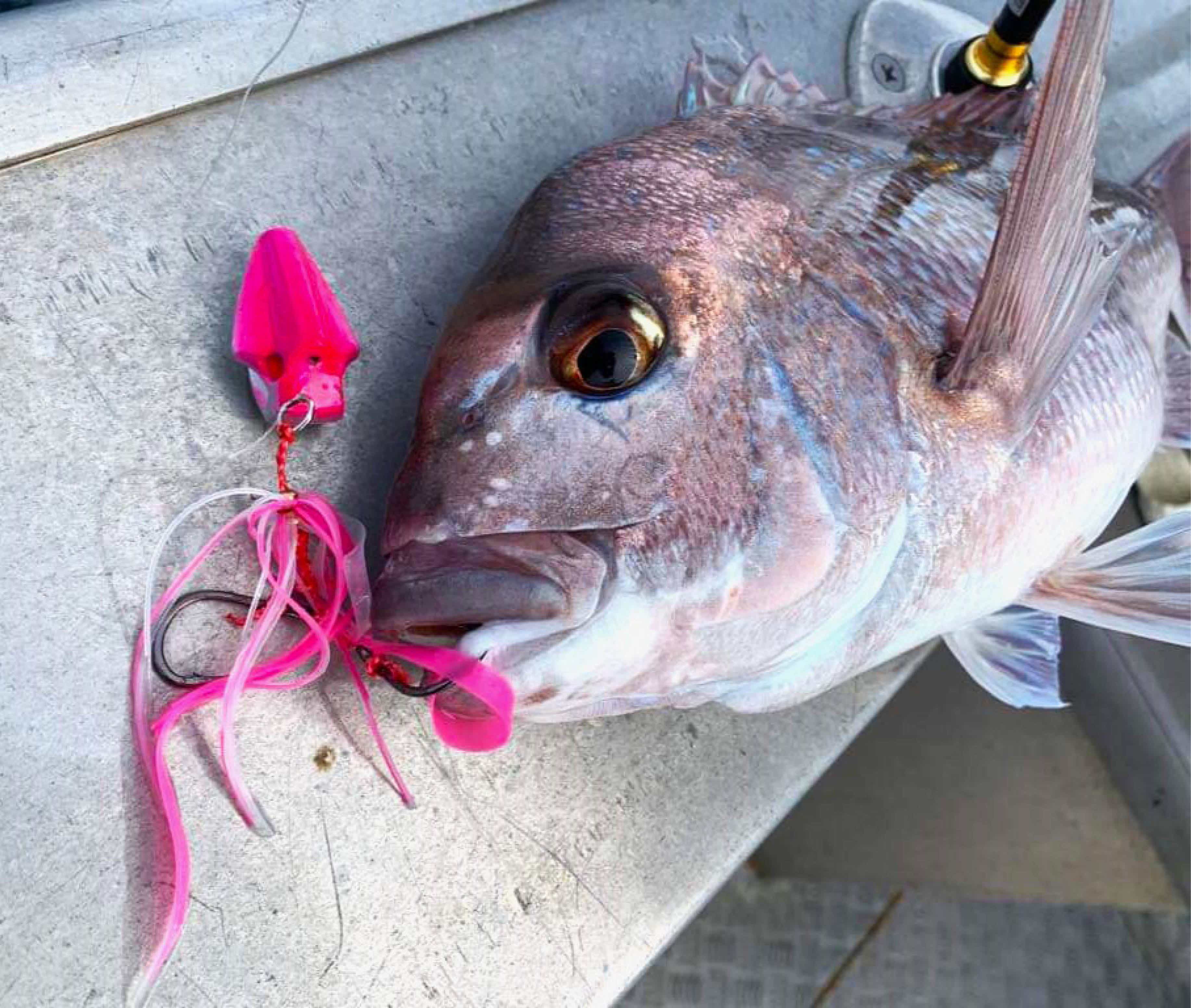



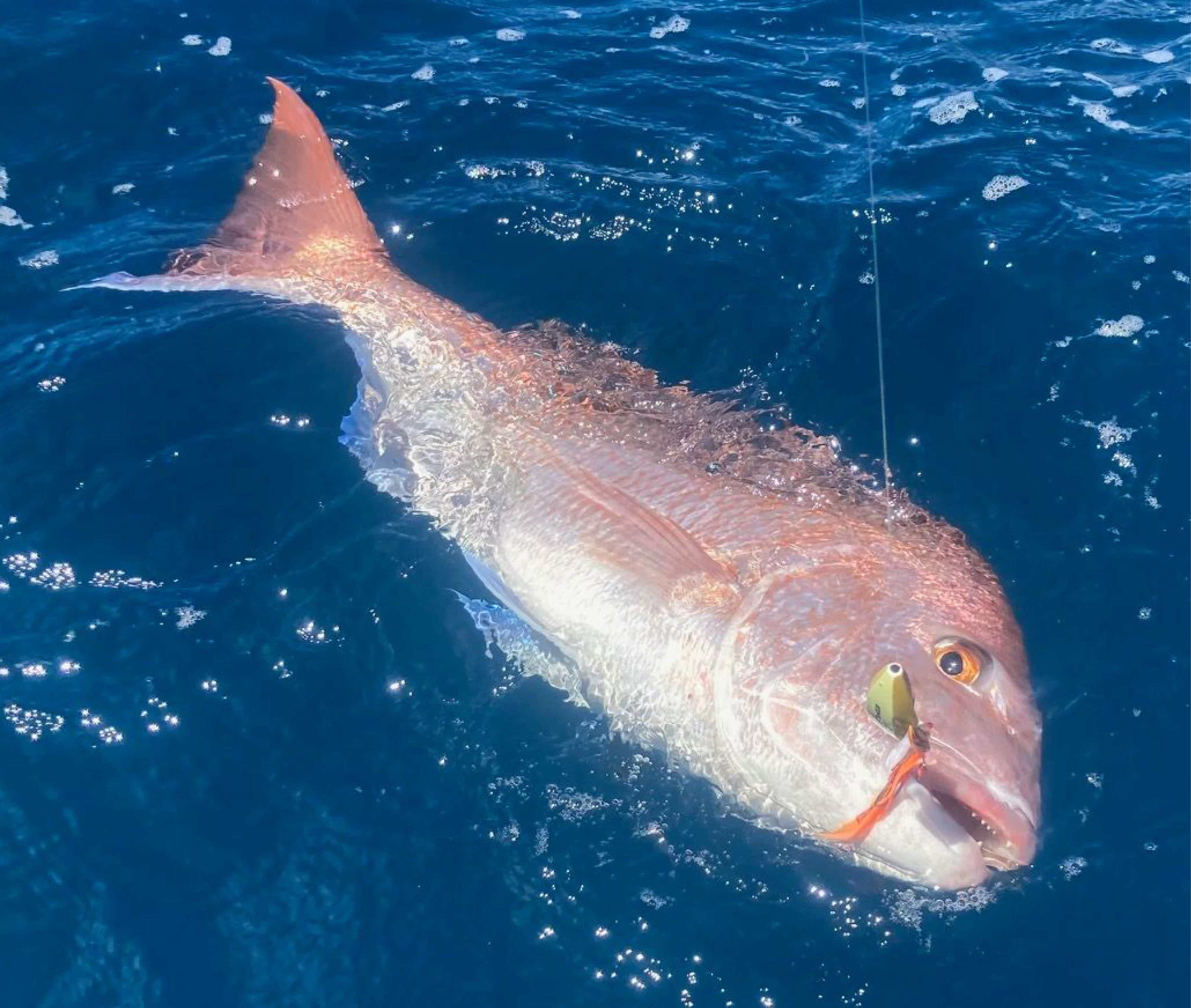

We provide general information on products, not personal advice. Always seek the help of a relevant tradesperson if you have a technical query.
For more information on Burnsco's range of fishing products, phone us on 0800 102041, email us, or Livechat with one of our team via the website.












